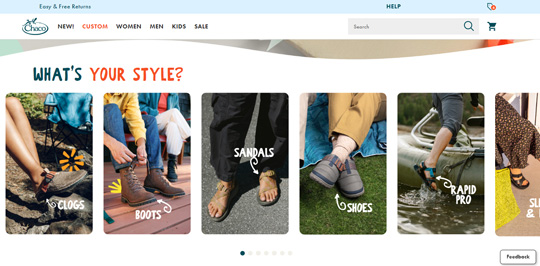
Choosing the right footwear for your outdoor adventures or everyday use can make a big difference.
In the world of comfortable sandals, Crocs and Chaco stand out as popular choices. Each offers unique features that appeal to different needs and preferences.
Crocs are known for their lightweight design and slip-on ease, perfect for casual wear or around water. They provide excellent comfort and are easy to clean, making them a strong contender for everyday use.
Chaco sandals, on the other hand, offer superior support and durability, especially appealing for hiking or other outdoor activities. Their adjustable straps and sturdier build give them an edge for those seeking a more secure and robust option.
Brand Overview
The video will be loaded from YouTube.com, a third party. If you play it, you accept their terms of service, and their use of cookies.
Crocs and Chaco are two popular footwear brands known for their comfort and style. Both have unique histories and cater to different needs and preferences, providing interesting options for a variety of occasions.
History of Crocs
Crocs was founded in 2002 by Scott Seamans, Lyndon Hanson, and George Boedecker Jr. Originally designed as a boating shoe, Crocs quickly became a sensation due to their comfort, lightweight design, and bright colors.
The brand is known for its signature material called Croslite, a proprietary resin that gives the shoes their distinctive squishy feel. Crocs gained a wide fan base, from healthcare professionals who appreciate their comfort, to kids drawn to their playful designs.
As the company expanded, Crocs introduced a range of styles, from clogs to sandals, while maintaining their core features. The brand’s appeal lies in its versatility, making Crocs suitable for both casual wear and specific activities.
History of Chaco
Chaco was established in 1989 by Mark Paigen, a rafting guide looking for the perfect sandal for outdoor adventures. The designs are built for durability and functionality, popular among outdoor enthusiasts. Unlike Crocs, Chaco sandals feature adjustable straps and a unique LUVSEAT footbed designed to support foot health.
Initially crafted for rafting and other water sports, Chaco sandals are now known for their strong grip and are often recommended for hiking. The brand has maintained its focus on quality and environmental responsibility, using materials that last and minimizing waste. Over the years, Chaco has gained a loyal following among those who value performance and sustainability in their footwear.
Design and Materials
The video will be loaded from YouTube.com, a third party. If you play it, you accept their terms of service, and their use of cookies.
Both Crocs and Chaco Sandals offer unique designs and materials suitable for different preferences. Crocs are known for their lightweight and flexible foam, while Chaco Sandals feature a durable and supportive structure.
Crocs Footbed and Strap Design
Crocs are made from Croslite, a lightweight foam material, which makes them comfortable and easy to wear. The footbed is cushioned and molds to the shape of your foot over time, offering a custom fit. Small massaging nubs on the footbed create a soothing feeling for your feet.
The design of Crocs includes a simple strap that can be worn either forward or back for a secure fit. This strap is adjustable, allowing you to slip the shoes on or off easily. Bright colors and various styles make Crocs a popular choice for casual and outdoor wear.
Chaco Sandals Structure
Chaco Sandals are designed with outdoor activities in mind. They feature a sturdy sole made from durable rubber, offering excellent traction. The footbed is ergonomically designed, providing arch support to reduce fatigue during long periods of walking.
The adjustable strap system is a key feature of Chaco Sandals. These straps are designed to provide a customizable fit, wrapping securely around your foot to ensure stability during vigorous activities. They come in various colors and patterns, adding a touch of personal style to a functional design.
Functionality and Performance
When deciding between Crocs and Chaco sandals, it’s important to look at how they perform in different areas. Consider how the comfort and arch support of the shoes match your foot’s needs. Also, think about how well they handle different surfaces when it comes to traction and durability.

Comfort and Arch Support
Crocs are well-known for their roomy design and use of soft foam. This makes them comfortable for daily wear. The foam molds to your feet, but they don’t offer much arch support. So, if you need strong arch support, Crocs might not be the best choice.
On the other hand, Chaco sandals, including models like the Z/1 and ZX/2, are designed with foot health in mind. They feature a contoured footbed for better arch support, making them great for long walks or hikes. Chacos might feel stiff at first, but they offer lasting comfort after a short break-in period.
Traction and Durability
In terms of traction, Crocs have a simple tread pattern. This works fine for flat surfaces, but they may not grip well on slippery or uneven terrain. Their durability is good for casual wear, but they’re not made for rough outdoor activities.
Chaco sandals stand out with their rugged soles, providing excellent grip on various surfaces. Whether you are walking on rocks or wet paths, Chacos are reliable. They are built to last even in demanding settings. Chaco’s durability makes them ideal for outdoor enthusiasts who need footwear that won’t wear out easily.
Versatility and Style
When choosing between Crocs and Chaco sandals, versatility and style play a big role. Crocs offer a wide range of customization options, while Chacos shine in their variety of strap colors.
Customization Options
Crocs are known for their customization. You can personalize them with Jibbitz, small charms that fit into the holes on top. This allows you to express your personality and interests uniquely. Crocs come in various designs and styles, from classic clogs to flip-flops.
Chaco sandals don’t offer as many customization features like charms or stickers. However, they have adjustable straps that let you find the perfect fit. This makes them functionally customizable, allowing you to enjoy comfort geared to your needs.
Selection of Strap Colors
Chaco sandals offer a wide range of strap colors and patterns. This makes it easy to find a pair that matches your style. You can choose from solid colors for a simple look or bold patterns if you want something more eye-catching.
Crocs also have a variety of colors, mostly in their base shoe design. Most colors are solid or two-toned. Crocs excels when it comes to limited editions and collaborations, offering styles that shift with trends.
Both brands ensure you have multiple color options, but the way they present these choices varies. Choose Crocs for charm-based creativity and Chacos for diverse color straps.
Use Cases and Environments
When choosing between Crocs and Chaco sandals, it’s important to think about where you’ll be using them. Each has features that make them ideal for specific environments like hiking trails or near water.
Suitability for Hiking and Outdoor Activities
Chaco sandals are known for their durability and are often seen on hiking trails. They have straps that keep your feet secure and a sturdy sole that grips rough terrain. This makes them great for long walks or hikes.
Crocs, on the other hand, offer cushioned comfort but might not provide the same level of foot security. While easy to slip on and off, they can be less stable on uneven paths. Some users may prefer Crocs for casual walks, but not for serious hikes.
Water-Friendly Features for Water Activities
Both Crocs and Chaco sandals are water-friendly, but they differ in a few ways.
Crocs are made from a material that dries quickly and floats, which is handy if you are around water. These shoes are easy to clean, and they’re comfortable for wearing at the beach or in other wet conditions.
Chaco sandals also perform well in watery environments, thanks to their quick-drying straps. The sole is designed to provide good traction on slippery surfaces, making it suitable for water sports or fishing trips.
You’ll find that both options work for water activities, each with unique benefits.
